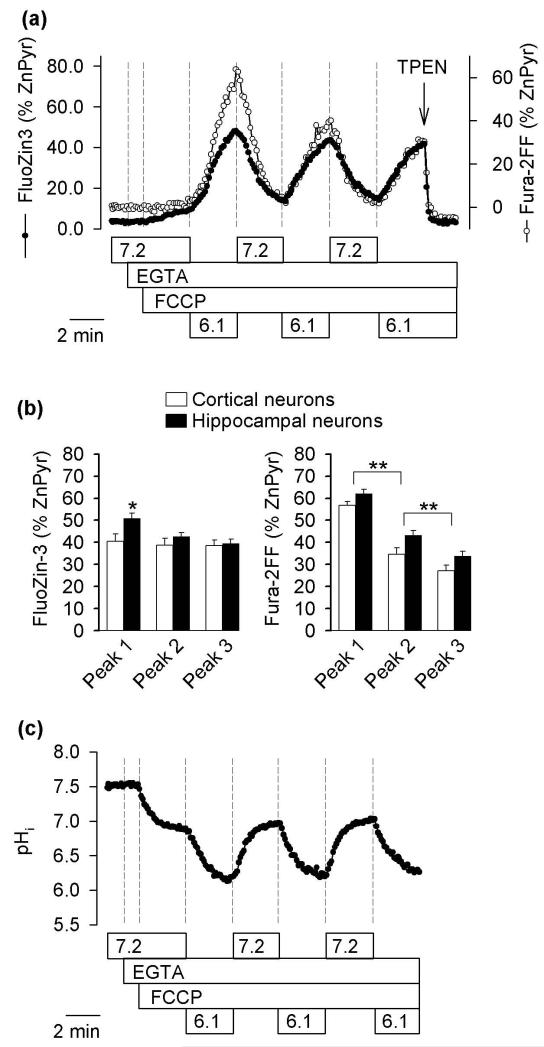Fig. 1.
Effects of repetitive applications of low pH on [Zn2+]i, [Ca2+]i, and pHi in neurons. (a) Effects of repetitive acidifications on FluoZin-3 and Fura-2FF signals in cortical neurons. Indicated in the legend are: pHo (7.2 or 6.1), superfusion with Ca2+- free and Zn2+-free medium (EGTA), and applications of 3 μM FCCP and 10 μM TPEN. The data are percentages of FluoZin-3 and Fura-2FF signals measured after an application of 100 μM ZnCl2 plus 10 μM pyrithione (ZnPyr) to saturate the probes with Zn2+ (for details see Methods). The plots are scaled such that the third peak of Fura-2FF signal overlaps the FluoZin-3 signal. The data are means (12 neurons) from a single experiment that was repeated five times with similar results. (b) Average peaks of FluoZin-3 and Fura-2FF signals in cortical and hippocampal neurons from experiments analogous to that shown in (a). The data are means ± SEM from five experiments on cortical neurons and six experiments on hippocampal neurons; ** p <0.01, * p <0.05, one-way ANOVA followed by Student-Newman-Keuls test. (c) Effects of repetitive acidifications on pHi in cortical neurons. The data are means (14 neurons) from a single experiment that was repeated three times with similar results. The experimental conditions are the same as described in (a).

